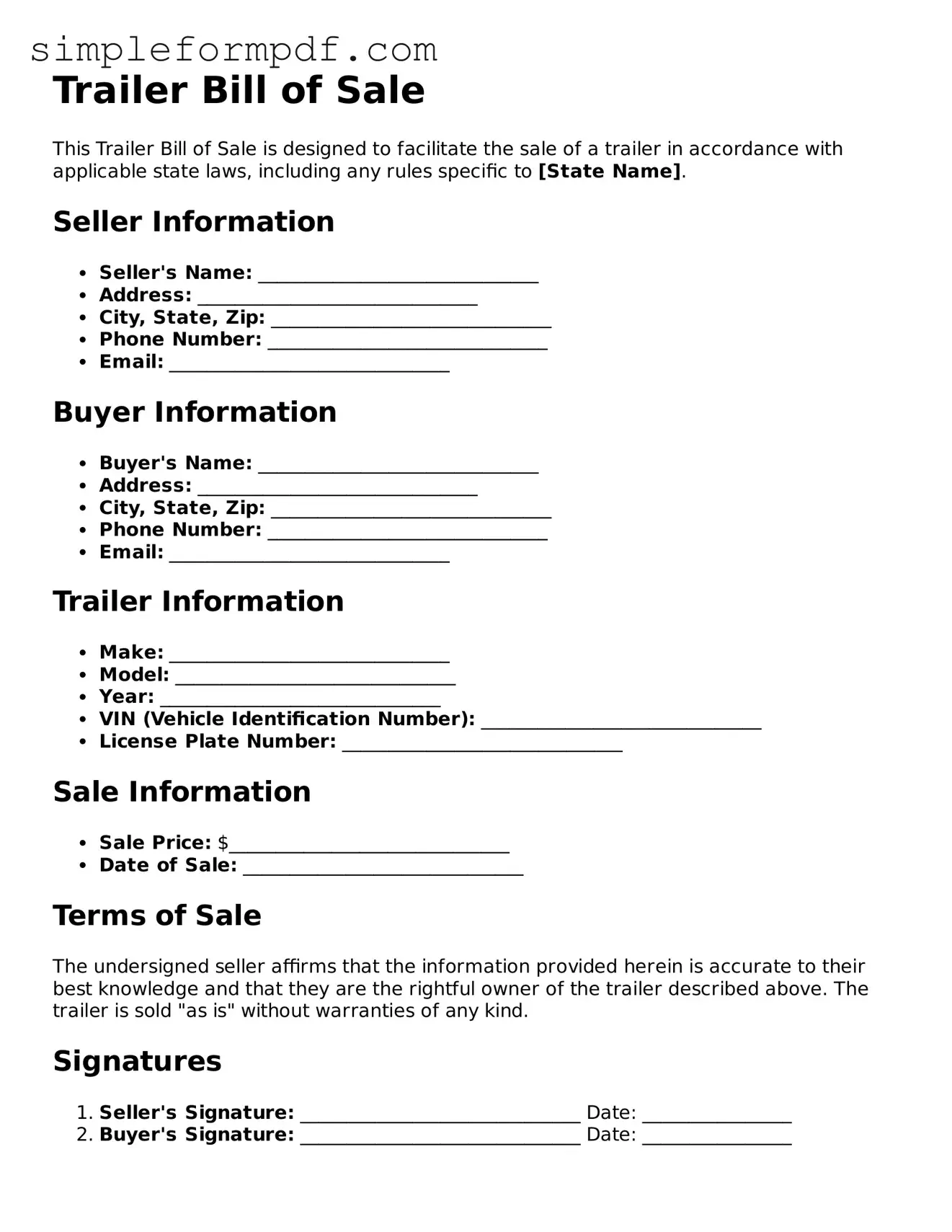Fillable Trailer Bill of Sale Template
A Trailer Bill of Sale is a legal document that transfers ownership of a trailer from one party to another. This form serves as proof of the transaction and includes essential details such as the buyer's and seller's information, trailer specifications, and sale price. To ensure a smooth transfer of ownership, it’s crucial to fill out the form accurately.
Ready to get started? Fill out the form by clicking the button below!
Launch Editor
